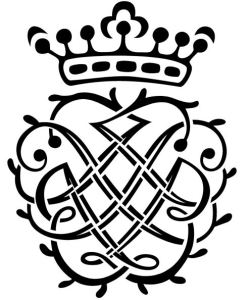Georg Muffat: Missa in Labore Requies a 24
Le Banquet Céleste, La Guilde des Mercenaires, Damien Guillon
Château de Versailles Spectacles CVS106. 58’53

If you like your music loud and dramatic, with moments of calm, you will love this recording by Le Banquet Céleste and La Guilde des Mercenaires of Georg Muffat’s c1690 Missa in Labore Requies a 24. Muffat (1653-1704) is one of the most interesting composers of the high Baroque period, not least because of his ability to combine musical genres from many different countries. Born in Savoy, he studied during his early teens with Lully in Paris. After a period as organist at Strasbourg Cathedral, he studied law in Ingolstadt, before moving to Vienna, Prague and then Salzburg, where he worked for about 10 years (with Biber) in the court of the Prince-Archbishop. After further study in Rome, where he studied organ with Pasquini and met Corelli. he moved to Passau as Kapellmeister to the Bishosh of Passau. It was in Passau that we find the first mention of the monumental Missa in Labore Requies, Muffat’s only surviving sacred work. The score came into Haydn’s hands, passing on his death into the Esterházy archives and finally to the Budapest National Library.
Until 1991, the Missa in Labore Requie was almost completely ignored, with doubts as to whether Muffat was the composer. The reason for its composition is still in doubt, the choice generally being Salzburg Cathedral or, as Peter Wollney opines in his programme note, perhaps as a calling card for his arrival at Passau Cathedral. Such a work could have been performed in either place, both having a large central space, in Salzburg complete with four organs on balconies at the corners of the central space. It is a grand work lasting around 46 minutes and scored for 24 voices in two vocal and three instrumental choirs. one with five trumpets and timpani, one with two cornets and three trombones, and the third with two violins, two viols and violone together with a continuo group, here of chamber organ, harpsichord and bassoon. Muffat’s use of these large resources is masterly, with contrasts between solo sections and grand tutti choruses for the whole ensemble.
This is clearly a celebratory piece but also includes some delightful little moments, an early one being the opening of the Gloria with its repeated antiphonal cries of Pax, Pax, Pax. At the end of the Gloria comes two instrumental pieces by much earlier composers, an organ Conson a 6 by Giovanni Valentini, (c1582-1649) a pupil of Giovanni Gabrieli, and an ebullient Sonata a 13 by Johann Stadlmayr (1575-1648).
The Credo is centred around the Et incarnatus est, for two sopranos, and the Crucifixus with its muffled drumbeats. After the Credo comes a rather more appropriate interjection in terms of the composer’s dates, the Dixit Dominus (from Vesperae Longiores ac Breviores) by Heinrich Ignaz Franz Biber (1644-1704). The concluding sequence makes a magnificent conclusion to this monumental piece.
Whether it was Salzburg or Passau, the one place it certainly was not performed was the Versailles Royal Chapel, where this recording was made. But the magnificent acoustics make it an effective venue, not least for the two French groups involved. The musical groups are not as spread out as they could have been in Salzburg or Passau, but the recording gives a suitable sense of the spatial aspects of the music, arranged as they are in a circle, the two brass groups being behind the conductor, the violin group and the two vocal ensembles.
The vocal soloists, all impressive, are Violaine Le Chenadec, Paul Figuier, David Tricou and Benoît Arnould in choir 1 and Myriam Arbouz, Mélodie Ruvio, Nicholas Scott and Renaud Bres in choir 2. The organist is Jean-Luc Ho and the director Damien Guillon who keeps everything together well.
